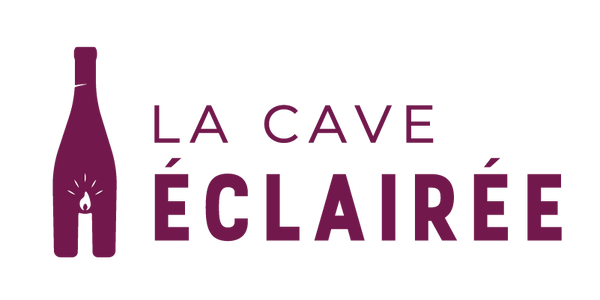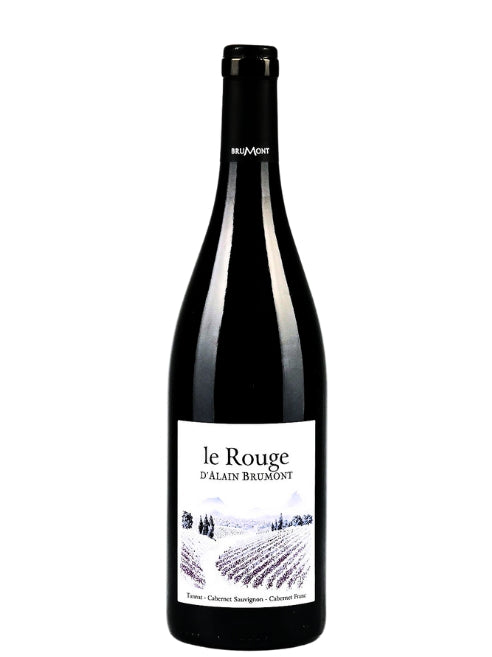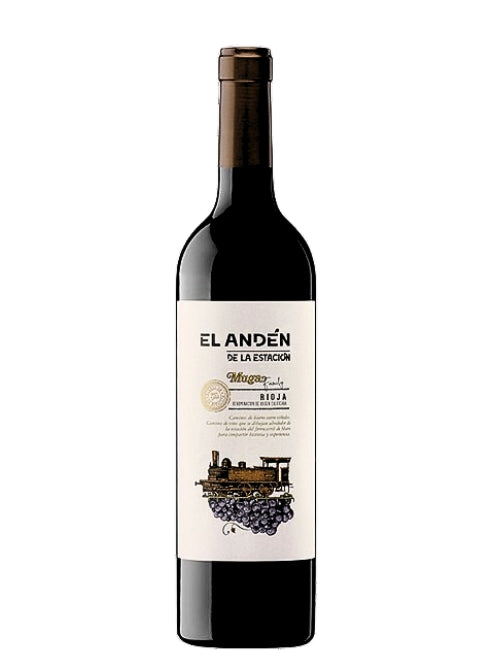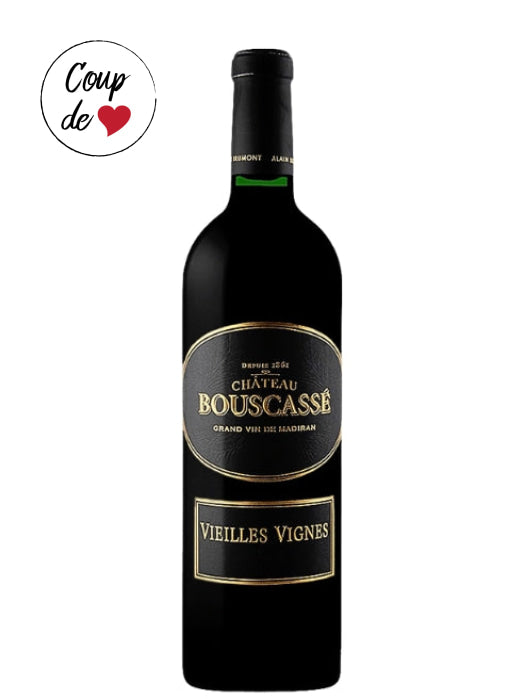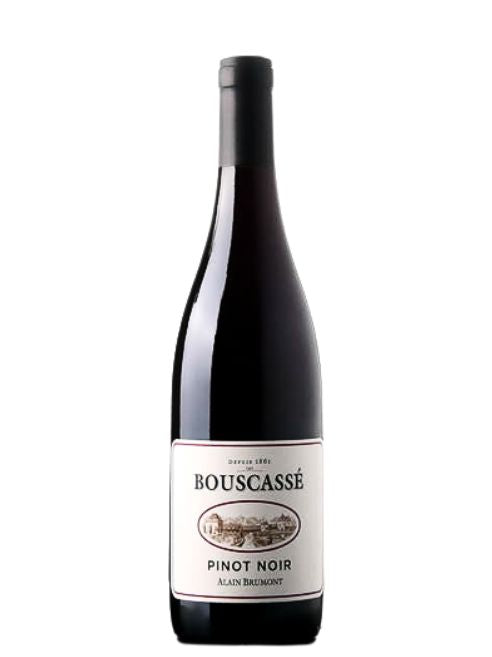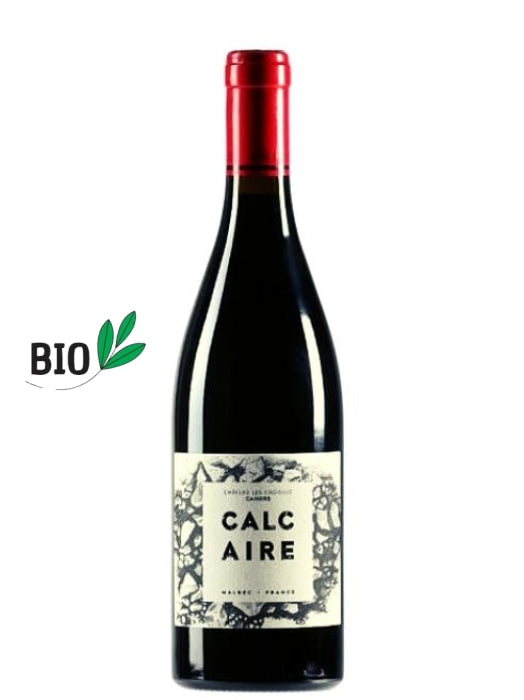The world of red wine can sometimes seem vast and complex for the novice. Indeed, its spectrum is particularly rich: from smooth red wine to powerful red wine and even oaky red wine, there are a multitude of styles. To top it all off, a great diversity of grape varieties exists, making the overall understanding even more difficult for the beginner.
To shed light on the subject, we will provide you in this article with all the keys to better understand red wine. We will explain its origins, its production method, and discuss the main styles you will encounter during tasting.
Follow the guide!
The origins of red wine
According to the archaeological traces we have, the first wines produced by humans were made over 8,000 years ago in the Caucasus (Georgia, Armenia, Azerbaijan, etc.). However, the creation of red wine as we know it today is much more recent.
Indeed, for many centuries, the predominant wines were primarily white and rosé. White wines were often more orange-tinted wines, while rosés did not resemble our current Côtes-de-Provence but were rather clairets, a sort of intermediate between rosé and red.
Furthermore, according to cultures,wines have long been mixed with plants (thyme, rosemary, etc.), spices, or even honey. In Greek culture, it was even customary to dilute wine with water to measure intoxication!
In any case, and although some red wines already existed during Antiquity (notably in Egypt and Greece), it was only from the 13th century that red wine began to be truly appreciated . Initially in France, by the elites, then, during the 14th century, it spread to the rest of Western Europe.
In the 17th century, a turning point occurred: while for centuries, claret had dominated global wine trade,popular demand (notably from Paris) then shifted towards more colorful, tannic, and structured wines.At that time, these were perceived as more nourishingand had the reputation of giving strength to workers. The main producing regions of these wines were then Burgundy , the Southwest(Gaillac, Cahors, Pyrenees) andSpain.
Century after century, lightly colored red wines would therefore give way to versions more intense both visually and in taste.
Today, the volume consumption of still wines (without bubbles) in France is divided between46% red wine, 34% white, and 20% rosé: red wine has thus become king .However, it should be noted that its consumption has been declining for a few years now in favor of other colors, as consumers are currently seeking more freshness and lightness in their glass... to be continued. Fresco depicting grape harvest in ancient Egypt The making of red wine Now that the origins of red wine are clearer to you, let's tackle its production. First of all, it is important to understand that red wine owes its color to its berries. Indeed, it is inside the grape skins that we find the coloring pigments (anthocyanins) that will give the wine its final color. To go further, here are the main steps in the vinification of a red wine.
Harvesting
This is of course the first step in making any wine. This phase involves picking the grapes when they reach maturity, either manually or mechanically.
Destemming (or de-stalking)
This is the first step in the winemaking process. It involvesseparating the berries from their stem (a woody and vegetal structure forming the skeleton of the grape cluster).
While this operation is optional, it is very commonly practicedbecause the stem contains many unpleasant vegetal tannins.
Crushing
The grape berries are then burst to extract the juice: this is crushing.
Maceration
Once crushed, the grapes are then placed in containers (stainless steel tank, barrel, cask, etc.) so that the juice comes into contact with the skins , thus giving the wine its color: this is maceration . This step generally lasts between 1 and 3 weeks depending on the grape variety and the type of wine the winemaker wishes to produce.
During maceration, punching down or pumping over is also performed. The solid parts (skins, seeds, etc.) indeed rise to the surface, forming a cap of pomace. The winemaker will then set it in motion, either by pumping the juice from the bottom of the tank to the top using a pump (pumping over), or by pushing the pomace inside the tank using a stick called a punch.By this action, the winemaker will promote better extraction of aromas, color, and tannins. Alcoholic Fermentation Here is another key moment in the production of red wine (and all wines, to be honest). Thanks to naturally present yeasts or those added by the winemaker, the sugars present in the grapes will convert into alcohol. This is the moment when grape juice becomes wine! This step occurs during maceration and generally lasts between 4 and 20 days. Racking and Pressing After fermentation, we "rack," meaning we empty the tanks to collect the produced wine, which we call here the "free-run wine."
Then, the solid parts remain (the pomace). These skins and seeds also contain juice, so the winemaker will press them gently to avoid extracting too many tannins or less noble aromas. This results in"press wine" , which is more colorful and powerful.
These two wines will then be blended by the winemaker in proportions deemed ideal to create the desired wine.
Aging
After blending the press wines and free-run wines, comes the aging period. This resting period is very important because it is during this time that the wine develops, stabilizes, and becomes more harmonious.
Breeding can be done within a wide variety of containers, but the most common remain stainless steel tanks, oak barrels, foudres (large wooden containers), and to a lesser extent, amphorae .
Breeding isa stage with a highly variable duration . Indeed, it lasts barely a few weeks for Beaujolais Nouveau, while it can take two to three years for the production ofgreat aging wines .
Racking and bottling
After breeding, the wine is racked: it is then transferred from one container to another to eliminate the lees (dead yeasts)as well as other undesirable deposits .
Bottling of the wine
We are reaching the end of the production process here. After apossible filtration carried out to clarify the wine, thus eliminating the last unwanted solid particles, our wine is finally bottled.
Following this "bottling", the winemaker generally keeps the wine in the cellar for a few weeks to stabilize it definitively, then finally puts it officially on sale.
In certain appellations, particularly in Spain within the DOCa Riojaor theDO Ribera del Duero, the producer may be required to keep the wine in the cellar for a few additional months so that it ages in the bottle before being sold.

Pumping over operation during the maceration of a red wine
The different categories of red wine
Now that you are fully familiar with the entire process of making red wine, let's look at its main styles. Indeed, while it is possible to classify wines in many ways (region, appellation, price, grape variety, etc.), we have chosen here to discuss the main categories of red wine that you will encounter during your tastings.
Soft wines
Soft wines are characterized by a certainfluidity on the palateas well as a light aspect.They are therefore easy to drink and generally havefew tanninsto precisely promote thisaccessibleside. This type of red wine is ideal for an aperitif and pairs very well with charcuterie boards or cheeses.
In the category of smooth wine, one might think of a Gamay from Beaujolais , a Cabernet Franc from Loire , or even a Pinot Noirfrom Burgundy .
Fruity wines
As their name suggests, the aromatic profile of fruity winesprimarily evolves on...fruity notes. For red wines, the aromas of strawberry, raspberry, blackcurrant, cherry, and blackberry are the most common markers.Fruity wines areoften smooth wines intended to be consumed young with a view to immediate pleasure.
If the wines previously mentioned in the category of smooth wines are also fruity wines, one might also consider a young Syrah fromthe Rhône Valley , a Trousseau fromJura , or even a Merlot from Languedoc or the Bordeaux region.
Friendship wines
Friendship wines overlap the characteristics of the two previous categories. Thus, they are generally smooth, fruityand are to be enjoyed with friends with a view to immediate pleasure .
The Languedoc-Roussillon , the Loire, the Southwest , or even the Rhône Valley can be excellent regions to find this style of wine.
Powerful wines
Powerful winesare the opposite of supple wines. These are vintages expressing a lot of character as well as a certain strength on the palate . This type of red wine often presents imposing tannins and isto be enjoyed during meals, generally with intense dishes like meat.
Here, one might think of Grands Crus from Bordeauxor even certain reds from Provence , Languedoc, orCorsica .
Oaked wines
Oaked winesare simplywines that have been aged in barrels. This aging process impartstanninsas well asoak aromas and numerous spiceslike vanilla, cinnamon, clove, or even coconut.
The intensity and style of these spices are determined by several factors such as t he type of wood used , its age (new wood or barrels of several years),the duration of aging as well as the toastingof the barrel.
While Bordeaux wines are well-known for their oaky aromas, this type of wine is found in all regions of France and the world.
Age-worthy wines
Age-worthy wines are cuvées that can positively evolve in the bottle over several years and sometimes even several decades.
In its youth, an age-worthy red wine is generally characterized by a certain tannic power as well as abeautiful acidity , both of which greatly contribute to the good longevity of the wines. Furthermore, prolonged aging in wood (or amphora)favors the good evolution of certain wines, accustoming them to being in contact with oxygen from the beginning of their life.
Although there is no official aging duration to qualify a wine as age-worthy, at
Great age-worthy wines are present in all regions of France and the world.
Sweet wines
Sweet wines are wines containing residual sugar . In the vast majority of cases, this sugar comes from the harvested grapes. This is the case, for example, with Sauternes in Bordeaux, some Vouvray in the Loire, or even Maury and Banyuls in Languedoc-Roussillon.
An official sweetness scale defines wines ranging from dry to sweet, including semi-dry and mellow.If you would like more details, feel free to read our article on the difference between a sweet wine and a liqueur wine !
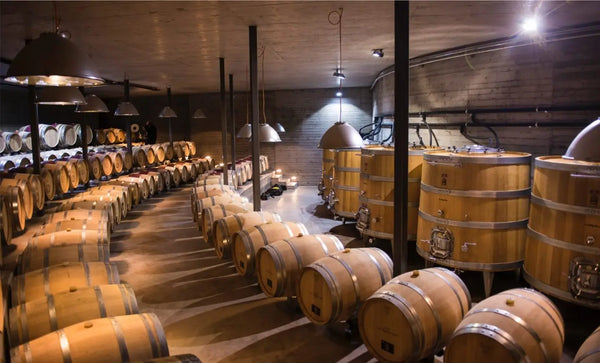
Cellar of an estate containing oak barrels and vats
The best red wines
Although it is complex to provide an exhaustive list of the best red wines,
